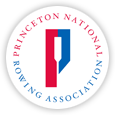COLD WEATHER POLICY
Rowing when the water temperature falls below 50º F. or the air temperature falls below 40º F. should be done with great consideration and caution. Hypothermia is a swift and incapacitating killer that strikes when the combination of cold weather and moisture work to decrease body temperature. It can take mere minutes before a full-size adult is incapable of helping herself/himself once hypothermia has set in. Keep in mind that you don’t have to fall in the water to get hypothermia. Cold air temperatures and any moisture on the body (from being splashed, rain, sleet, snow) can lead to hypothermia.
The following safety rules have been established to minimize the risks in cold weather.
Practices on Mercer Lake
When the combined water and air temperature falls below 90º F.:
– For Elite/National Team
o Only experienced rowers are allowed on the water in small boats.
o Coaching launches must be on the water within 500 meters of the coached shells.
– For Juniors and Masters
o Only Boats with 4 or more oars are allowed on the water.
o All shells must be accompanied by a coaching launch which is within 100 meters of the coached shell.
o Shell to coaching launch limits
Varsity level rowers or rowers with 1 or more year of experience rowing – 1 coaching launch for 2 rowing shells.
Novice level rower – 1 coaching launch for 1 rowing shell.
– All coxswains, coaches and launch occupants must wear personal floatation (survival suit with floatation, inflatable or non-inflatable pfd).
– All launches must have enough pfd’s for the rowers that are being coached in addition to the people in the launch and carry blankets for the rowers in a boat of the size being coached.
– Accompanying coaching launches must be able to safely rescue all of the rowers (including coxswain) in at least one of the shells being coached.
– Coaches must have cell phones which are protected and easily accessible.
– There must be another coaching launch on the water or a person on land with access to a cell phone and launch that can respond in the case of an emergency.
When the water temperature falls below 40º F.:
– Only boats with 4 or more oars are allowed on the water.
– All boats must be accompanied by a coaching launch which is within 100 meters of the shells at all times.
– No novice boats on the water.
– No rowing before sunrise or after sunset.
– No rowing when there is ice on the lake.
Water Temperature Survival Times
Water Temperature Time to Exhaustion or Unconsciousness
Under 32 degrees Fahrenheit Under 15 minutes
32 – 40 degrees Fahrenheit 15 – 30 minutes
40 – 50 degrees Fahrenheit 30 – 60 minutes
50 – 60 degrees Fahrenheit 1 -2 hours
HYPOTHERMIA
Hypothermia is a condition that occurs when the temperature of the human body is lowered to a dangerous point due to exposure to cold and/or wet conditions. Cold temperatures and wet conditions work together to pull heat away from the body, lowering the body’s core temperature. Even in mild conditions, the addition of rain or submersion in cold water and can sufficiently reduce body warmth to trigger hypothermic conditions in the body. A person’s condition can degrade rapidly, impairing breathing and coordination, making it impossible to swim or keep one’s head above water. Emergency action needs to be taken no matter what the level of hypothermia.
EARLY HYPOTHERMIA
Symptoms: Rapid shivering, numbness, loss of strength and coordination, semi- consciousness.
Action: Maintain open airway. Transfer to a warm environment as soon as possible. Remove wet clothing. Use blankets to help warm individual or, if available, a warm shower. Warm torso area first. Seek medical attention.
PROFOUND HYPOTHERMIA
Symptoms: Person will be pale, stiff, and cold, unresponsive to stimuli, and possibly unconscious. Little or no cardiac or respiratory activity will be present.
Action: Move or manipulate as gently as possible. Prevent further heat loss, but DO NOT attempt to re-warm. Maintain open airway, and activate EMS procedures. Call for emergency help immediately!
